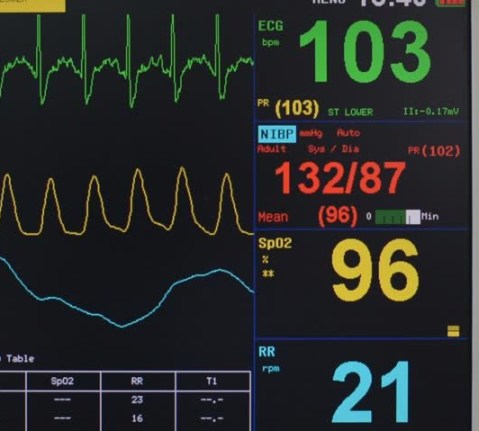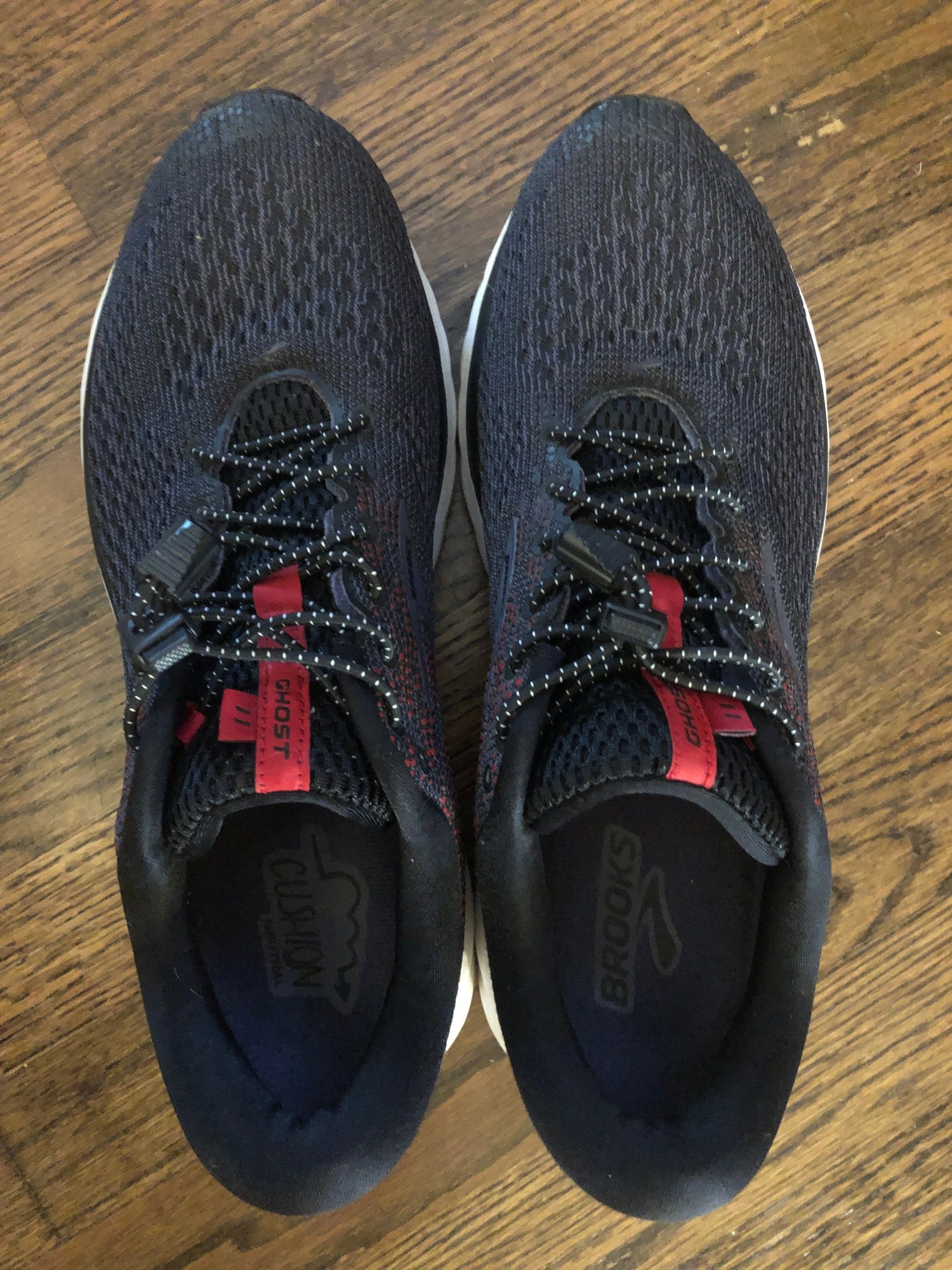

I am a runner. I run long to train for iron distance triathlons. I run for fun with friends in the cool early morning sun and for a hot venti americano after. I run to cope with the frustrations that comes with life and being a busy physician in today’s world.
I am a doctor. I take care of the critically ill. I treat patients to try and reverse life-threatening illness. I care for them while on life-supporting machines and medicines. Most of the time they heal and recover. Too frequently they don’t.
Today I am running not to train, for fun or to cope. Today I need to hurt. To feel my calves ache and lungs burn. To take my mind of something far deeper and distressing.
Today is day five of my weeklong call in the Intensive care unit. The mid-April sun has found its way to Chicago. Hard to appreciate when tethered to a climate controlled, sterile hospital environment for a week. But as I finally step outside and into the day’s light, fresh air hits my face, warm and refreshing. Almost liberating. Nice but fleeting. It’s no match for this ache inside.
I grab my running shoes. I want and need to take advantage of this brief respite. The breeze outside guides the few clouds across a pale blue sky. They look light and airy. I want to feel that. Weightless.
I leave the house and start on my path. My brain is firing, full of disjointed, moving thoughts loosely connected by invisible threads: Truisms, Stages of grief and dying, Geometry, and Laws of nature. They move like frenetic billiard balls, fueled by this internal entropy, bouncing around in my head. I try to stay with one, to try and process, only to have it ricocheted out by another Brownian thought. I need to catch up with newtons first law, and I hope by putting myself into motion, these thoughts might slow down enough to allow me to grab hold.
Mile 1. At the start of my runs I try and establish a baseline. Cadence, heart rate, pace. The basics. Building blocks. Starting points. I think of the basic rules and truths of my work as a doctor for the critically ill.
Rule 1: People will die in the ICU.
Rule 2: Doctors cannot change rule number 1.
Rule 3: Doctors, can however, impact the pace of rule number 1.
Doctors, along with modern medicine and a functioning healthcare system, can prevent death. We treat acute pneumonias and repair ruptured vessels and perforated organs. We shock defibrillating hearts, stent open blocked vessels and swap healthy organs for those that have failed. But death, ultimately, is not something that can be beaten back or battled and won. It was deemed inevitable the day we were born. As a physician, I have accepted this fact, although admittedly, I am still working on this as a human, a spouse, a parent and son. But even though there are things we cannot fix, repair, or shock back to health, we have the ability to affect the shape and pace of that path forward. To create more opportunities to feel the warmth of the sun without a window in the way, or a mouthful of cold ice cream with hot fudge, dripping from a messy waffle cone, instead of a tiny hospital paper cup. To joke and laugh or argue and cry in the presence of those who mean the most. But if those things that give life meaning are no longer obtainable, then the ability to slow the pace of death becomes less noble and more uncomfortable. I currently have a few patients on service where death is imminent. They will never feel warm sun on their faces, or ice cream on their lips again. And I do not know if their ears still hear the familiar voices of their families at the bedside.
Mile 2. Sweat beads around my visor. The heat counters the cold in my core. I feel, for the moment, a little more in control and grab hold of a thought. There are two points, A and B, in my head. That is where my patients exist. They are at point A, alive but not living, moving towards death, point B. In Euclidean geometry, the shortest distance between two points is a straight line. But distance is not the space where medicine operates. The time and the rate at which we travel are the variables under my influence.
Rate is equal to a change in distance over change in time.
Newton’s second law of motion states that acceleration, a change in rate, is equal to the forces acting upon it multiplied by its mass.
Currently, I am applying forces. I force air into lungs that do not want to open. I push fluids and medicines to force a heart to beat stronger than it is capable. I am trying to slow acceleration.
From a medical standpoint, there is nothing particularly challenging about those actions. Complexity comes, not from my patients’ physiology but from the denials of their families. As sure as confident as I am that we are headed toward point B, the families are just as certain, if not more so, that there is a different point, with a different letter, that will provide a different outcome. One where my patients will feel the sun on their faces again.
This is where clinical medicine ends and something else begins. I leave my comfortable role as an intensivist, the fixer of electrolytes, the manager of a ventilators, the titrator of pressors, to be something very different.
Mile 3. On some runs, the need to constantly physically push myself fades as I settle into a rhythm. My breathing, swinging arms, and sound of my shoes making contact with crushed gravel all serve as a metronome, freeing more headspace. I visualize the connection between doctors, patients and families. There is a naïve almost quixotic view of how this dynamic should play out in the ICU. We spend more than a decade learning how to help critically ill patients. They come in, burning up with fever, disoriented and altered. They struggle to breathe, their lungs filling with fluid. We diagnose the problem then thoughtfully implement a treatment plan. Their fevers break. Their oxygen levels improve. Their confusion lifts. The angst of their families is relieved. This is the paradigm. We help and heal. We decrease tension and provide comfort to patients and families alike. When we walk into a patients’ rooms it evokes hope and trust from all around.
Unfortunately that has not been my experience this week. My presence, my body and my words bring the reality of death into the room. I discuss persistent fevers, the need for more oxygen and continued confusion. I explain accumulating acids, intolerance to nutrition and the development of blood clots while still being prone to bleeding. As I explain each failing organ system, an emotional force pushes back, an incoming tide fueled by the strength of decades of marriage, parent-child relationships, and complicated memories.
Newton’s third law of motion states that for every action there is an equal and opposite reaction. When I push a family by verbalizing the number of days spent on the ventilator or the lethality of a patient’s underlying disease, it will evoke an opposing response that hardens their denial, mistrust, suspicion and fear.
Mile 4. I can feel it a bit in my legs, the build-up of acids. Lactate is being generated faster than my body can clear. But the discomfort is not enough to distract me from what’s gnawing at my core. Something has been eating away at me this past week. Four patients. All similar. All moving slowly on that line between A and B. Their families all somewhere on the spectrum of denial. Some outright reject the validity of my words. Others fiercely demand we continue on, without hesitancy, without retreat.
My challenge has shifted from correcting my patient’s failing physiology to understanding the complex dynamics and emotional connections between family members. Is the past full of guilt full of apologies thought about but never uttered? Is the present full of the fear of living a life alone? Are words of love on the tip of the tongue, not yet spoken? We are in an awkward dance through Kubler Ross’s stages of grief. Objective information is refuted and denied. Families bargain for more tests and interventions, sometimes spewing angry words at staff and providers. The path to acceptance, when filled with tremendous emotional pain, is not a road passively travelled. I am no longer a healer of the sick. I am voicing what families do not want to hear and what their hearts do not want to feel. I am now causing their pain.
And each day a little piece of me is breaking inside.
Mile 5. I push forward. Some days I just run without a goal or destination. Some days I have a specific route in mind. A script of sorts that guides my path. My approach to the ICU this week is similarly structured. I am director of a movie in which I also have a leading role. I manage the flow of information. I orchestrate the movement of the team around me. On morning bedside rounds, I take extra time to share all that we are “doing” in front of a family audience. I explain the results of images or therapies that have failed. I choose my words carefully. They are active, reinforcing action. I repeat the grim impressions made by other consulting doctors in stone-cold objective fashion. My body language is open. My voice is soft. I maintain eye contact. I take a gentle step forward to decrease that space separating us.
It all feels rehearsed. These are words and phrases I have used time and time again. I fight my desire to scream, to shake and to jolt the family into reality. To show how futile the needlesticks, dialysis lines and trips to radiology are. But I keep it all in. The truth is, at this moment, the families hurt far more than the patients. They don’t have narcotics and sedatives infusing through their veins. But in order to stop prolonging death, I will need to inflict more pain on family members who are already suffering. I need to defy Newton’s third law of motion. I need to get the family to trust me more than they trust themselves.
Mile 6. I pick up my pace and increase my effort. I force my legs to move faster. The lactate starts to burn and my muscles tighten. My breathing is deeper, faster. My legs hurt and back is tight. Each breath is less satisfying. I need this. I need to impose something uncomfortable on myself from the outside to drown out the dissonance inside.
I cause pain in others.
I get it. I know I am not the reason behind their life-threatening infection or metastatic cancer or end-stage dementia. I know that someone needs to talk, to explain and to shepherd families through this process.
But it still hurts.
I navigate my patients and their families through some of the most difficult moments in their lives. From the outside, it appears empathic. My words, though truthful and honest, are not “spontaneous” or “organic”. They feel “scripted” and “managed” cultivated from thousands of similar conversations. But random and improvisational conversations are not helpful for families in an ICU. But what is better for them feels less genuine to me.
I have to focus on pushing forward. My legs want to stop, but I won’t let them. The sound of my forced breaths drowns out the dialogue in my head. It overwhelms the hiss of ventilators and caustic beeps from IV machines and soulless monitors. It helps me erase, for at least a short time, the begging eyes of a spouse clinging to hope.
And as everything fades out, a single voice I recognize as my own comes through.
If I orchestrate a family’s march toward death, is there space for true empathy and compassion?
Can empathy be scripted?
If I cause pain, can I still be good?
The dance I share with my patients and families is complex. The intersection of life and death in the ICU is messy, but we cannot shy away from helping families deal with their pain. A managed, orchestrated and self-monitored approach to such conversations is not is not evidence of a lack of empathy. Failing to help families move beyond denial is.
My run is done. My legs and lungs are spent. So are my brain and heart.
I shower, stretch and try to make the shift from hospital to home. Tonight, we are all home and able to have a rare family dinner together. I think about the complex and intersecting threads that connect us. Messy, yet beautiful. I am thankful for what I have.
Later, lying in bed, trying to recharge for tomorrow, I drift in that place somewhere between wake and sleep. Three more rules float through my head.
Rule 4. There will always be patients moving from A to B.
Rule 5. There will always be families that will struggle with #1
Rule 6. I will continue to wake up and help families navigate this struggle the best way I can.

